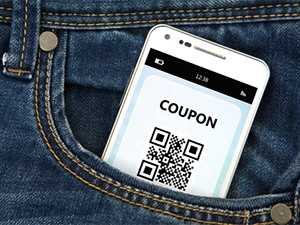
Nearly 1.6 billion coupons will be delivered annually to consumers via Bluetooth low energy beacon technology by 2020, up from just 11 million this year, as retailers seek to develop proximity marketing campaigns in and around their stores.
This is according to Juniper Research's recent research, several leading US retailers have now deployed beacon networks, with Macy's having installed more than 4 000 in its stores.
Bluetooth low energy (BLE) beacons allow smartphones to interact with sensors embedded within physical locations.
Steffen Sorrell, senior analyst at Juniper Research, says the beacon industry is expanding rapidly.
Using this method to provide consumers with contextually relevant information in conjunction with their smartphone or wearable will enormously enhance the in-store experience, he adds.
For consumers, beacon technology allows for enhanced experiences that are contextual based on location, says Independent technology and market research company Forrester Research.
For retailers, beacons unlock additional customer insight and targeting capabilities that drive both revenue and improved service, it adds.
However, surrounding the hype is a lack of clarity on consumer benefits, the business case, and the work needed to deploy and maintain a beacon platform in-store, says Forrester.
A BI Intelligence report says traditional retailers have become much more adept at using technology to push back against online-only e-commerce sites.
Beacons are among the most important new mobile technologies helping real-world merchants win back sales, it says.
The Juniper research says in-store beacons have consistently generated high redemption rates. It referred to the case of the Chinese jewellery chain Chow Tai Fook, where a campaign in early 2015 saw redemption rates approaching 60%, resulting in a sales uplift of $16 million for the company.
According to the research, there is opportunity presented by locating beacons outside storefronts, with the UK's Proxama deploying a network of beacons in locations such as buses, taxis, shopping malls and airports.
It argued that the introduction of similar 'open beacon' solutions could serve to drive both footfall and engagement.
The report also pointed out the growth in contactless infrastructure and greater consumer awareness around near field communication (NFC) would lead to significant opportunities for proximity marketing in the medium term.
According to head of forecasting and consultancy at Juniper Research, Dr Windsor Holden, "the launch of Apple Pay dramatically increased public and retailer awareness of NFC.
"As contactless usage accelerates at point of sale, retailers will then move to incorporate NFC at all stages of the customer lifecycle, including loyalty and engagement."
However, the research cautioned that the use of beacon technology was very much a work in progress, with many retailers concerned that excessive, indiscriminate messages pushed by the beacon could be perceived as intrusive and damage their relationship with the customer, says Juniper Research.
Share